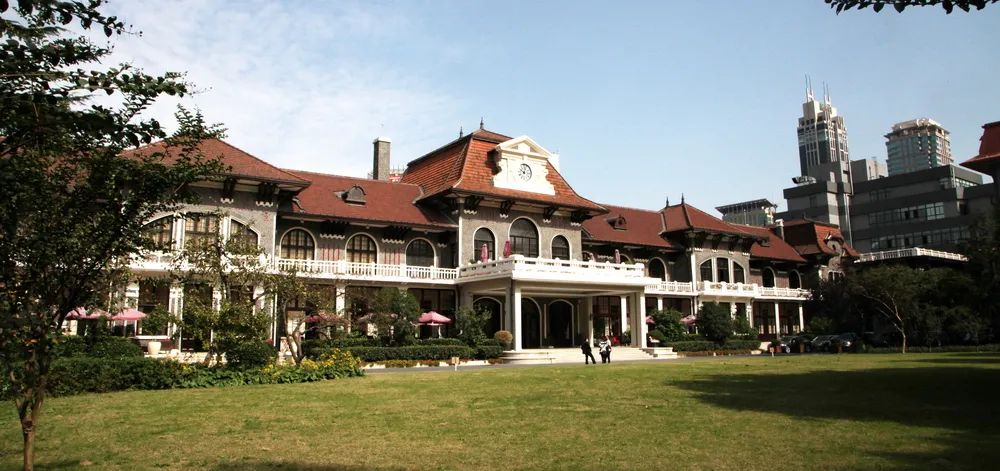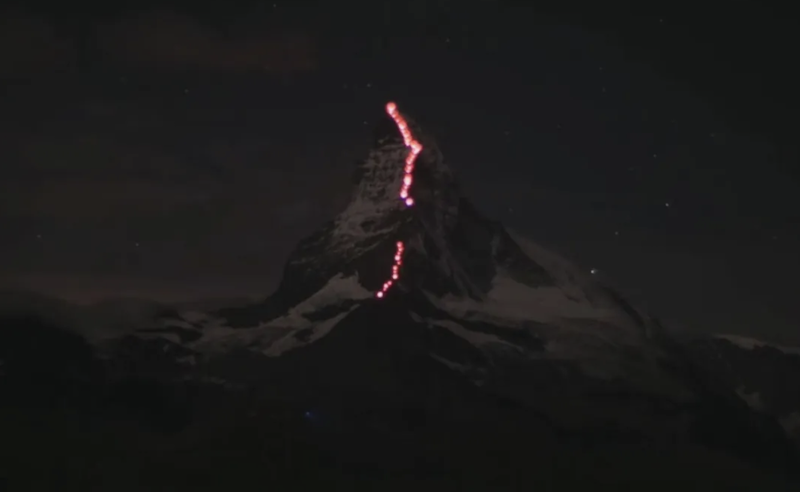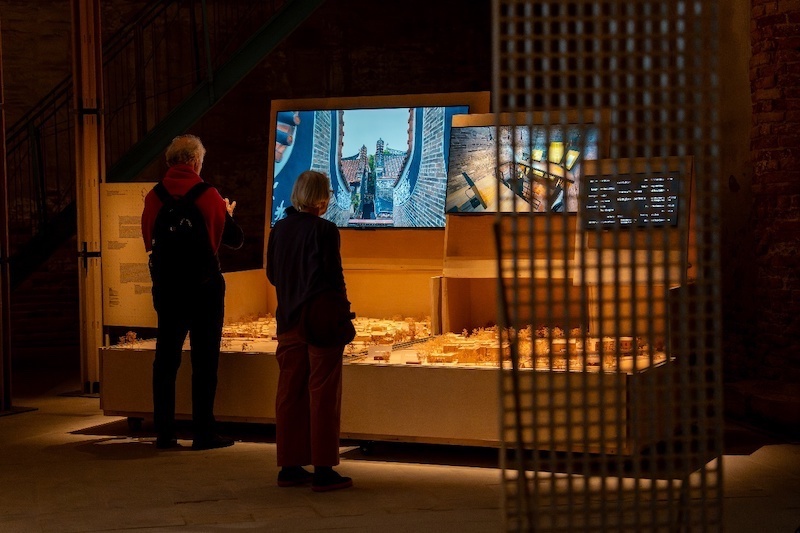
The Paper learned that the "Autumn Science and Art Salon," co-hosted by the Shanghai Association for Science and Technology and APSMUSEUM, was recently held at the Shanghai Science Hall, a historic building that has always witnessed the cross-border coexistence of science and art.
Renowned artist Xu Bing, Alistair Hudson, president of the Karlsruhe Center for Art and Media (ZKM) in Germany, Liu Xin, professor at the Tsung-Dao Lee Institute of Shanghai Jiao Tong University, and many other experts and scholars active in the art and science fields explored diverse paths for the integration of science and art based on their own research and practice at this art salon.
The Shanghai Science Hall, originally the French General Chamber of Commerce, was built in the early 20th century as a French Renaissance-style building. In 1956, it was converted into a venue for scientific and technological workers, and the inscription was written by Marshal Chen Yi, the first mayor of Shanghai in the People's Republic of China. It was the first local venue for scientific and technological workers in the country. Nobel laureates such as Patton, Yang Zhenning, Li Zhengdao, Ding Zhaozhong, and Shedov, the father of Soviet rocketry, have all spoken at the Science Hall.

Shanghai Science Hall
This "Autumn Science and Art Salon" features an exhibition and dialogue on the theme of how science and art can benefit contemporary society.
During the thematic sharing session, Hudson used the development of the Manchester arts institution where he used to work as an example to illustrate how arts institutions have served to educate the working class and enable them to contribute their creativity to society.

Alistair Hudson, President of the Karlsruhe Center for Art and Media (ZKM), Germany, at the salon.
He traced the history of the Karlsruhe Center for Art and Media (ZKM) in Germany since its founding in 1989. This art institution, converted from a factory, was established a year before the advent of the internet. It is not only a museum but also a research and production center. "ZKM takes the development, production, and dissemination of knowledge as its mission, believing that technology, art, and society intersect," he explained. Currently, ZKM has 10 venues with different functions, a collection of over 12,000 media art pieces, and includes an archive and collections. It hosts electronic music festivals, performances, and other public programs, attracting approximately 3,000 visitors and students annually.

Karlsruhe Art and Media Center, Germany
Hudson highlighted ZKM's cross-disciplinary practices in applying technology in recent years. These include combining traditional art collections with artificial intelligence to provide visitors with "customized interpretations," allowing older works to be reread in new contexts; launching the Traveler Companion Project to explore the network of human intelligence; and collaborating with global artists (such as Chinese artist Zheng Guogu and the Congolese Plantation Workers Art Union) to create in different ways, challenging the existing knowledge production system. The core of these practices is not technology itself, but rather using technology to deconstruct and reorganize the power relations of knowledge. Based on this, Hudson proposed the concept of "Museum 3.0." He believes that museums should no longer be merely spaces for public participation, but should become true "gathering places"—not just spaces for public participation, but spaces where people gather and converse about the future.

From June 20 to September 27, 2015, a cloud floated in the space. This work, titled "Cloudscapes," was created by Transolar+Tetsuo Kondo specifically for the ZKM space. © ZKM | Centre for Art and Media, Photo: Harald Völkl
Artist Xu Bing participated in the online salon, where he discussed his ongoing space art project. He recalled that seven years ago, at the invitation of Yu Wende of Wanhu Chuangshi, he began working on art projects incorporating rockets. His research revealed an increasingly close relationship between space and contemporary art, with rapid advancements in space technology, particularly the rise of private space technology companies, providing opportunities for artists to utilize cutting-edge space technologies in their creations.

Xu Bing (bottom left), Han Bo (top right), and others participated in the online salon.

Xu Bingtian Book-shaped rocket launch preparations
In practice, however, there have been both failures and successes. Currently, the project has two art satellites, SCA-1 and SCA-3, in orbit for artistic creation, and has established the "Xu Bing Art Satellite Residency Project" for global artists to share. In the past year, more than 70 artists have participated in the creation.

SCA-2 Art Satellite Close-up and Laboratory Scene
In Xu Bing's view, space art projects have expanded the boundaries of artistic creation, making artists aware of the limitations of their own imagination and challenging old artistic thinking. He also believes that the core of art originates from the carbon-based human senses of sight, hearing, smell, taste, and touch, which is a field that AI cannot easily replace. Art and AI need to compete, inspire, and constrain each other to promote the balanced development of human civilization.

A stage performance of David Gersten's "25 Hours" project, part of the "Xu Bing Art Satellite Residency Project".
Swiss artist Andreas Gysin, renowned for his interdisciplinary experiments in graphic design, generative art, and interactive installations, shared his creative work utilizing programmed text and display technologies in this discussion. For example, he uses programs to allow text to self-correct, resulting in an organic and vibrant presentation. One aspect of his work is based on mechanical page-turning modules found in train stations and gas stations, exploring concepts of shape, composition, and speed through text recombination and digital display to create new graphic cues and languages.

Mechanical page-turning information display screen at the train station
Professor Liu Xin of the Tsung-Dao Lee Institute at Shanghai Jiao Tong University introduced the Tsung-Dao Lee Science and Art Center. Inspired by theoretical condensed matter physicist Wen Xiaogang (Member of the National Academy of Sciences and Professor at MIT), the center believes that basic scientific research requires unbridled imagination, and art is the most imaginative field; science and art should mutually promote each other in innovation. Using Professor Tsung-Dao Lee as an example, Liu Xin advocated that science and art are two sides of the same coin, and that the artistic creations behind his lattice gauge theory embody the integration of science and art. He also cited the connections between the works of artists such as Picasso and Dali and scientific concepts, such as Dali's "The Disappearance of Persistent Memory," which reflects the implications of relativity and quantum mechanics.

Salvador Dalí's *The Disappearance of Persistent Memory*
Professor Hu Liang of the School of Computer Science and Technology at Tongji University shared that with the emergence of large-scale models such as ChatGPT, AIGC (Artificial Intelligence Generated Content) technology has developed rapidly and has been widely applied in fields such as finance, health, and law. AI-generated content on the internet has even surpassed human-created content. AIGC can not only generate text, images, and videos, but also dynamically generate personalized content based on user characteristics, and can collaboratively complete image creation and editing through prompts.
He stated that AI Agents are currently a hot research topic, and through the division of labor and collaboration among multiple agents, complex finished products can be directly produced in the future. He also envisioned the potential of brain-computer interfaces in creative work, explaining how decoding fMRI (functional magnetic resonance imaging) brain signals can translate brain activity into images, bringing entirely new possibilities to artistic creation.

Art competition entries generated by MidJourney (an AI model)
During the subsequent roundtable discussion, artists and technologists shared their attitudes towards AI applications from their respective fields. Hudson believes that AI is still a rudimentary technology, currently only capable of processing information and reorganizing data, but will eventually enter a stage where it can make autonomous decisions. He emphasized the diversity of intelligent forms and stressed the need to change perspectives on artificial intelligence and art, and to reconsider the evaluation criteria across different disciplines.
Guo Ruiwen, who works in digital art creation, shared that he rarely lets AI directly output content in his actual workflow, and has his own attitude and creative control considerations regarding the use of AI.
Poet and artist Han Bo, drawing on his own experiences in Greece, mentioned that Aristotle was a pioneer of systems science and interdisciplinary research, and that his views on drama in his poetics reflected the healing function of traditional art. In his view, the core of this discussion remains the question of truth, goodness, and beauty, focusing on how to leverage new technologies to enable artists to express themselves freely and allow art to better serve humanity's pursuit of beauty.
Xu Bing believes that the core of art is to promote new thinking and creation. With the introduction of AI, its data processing capabilities have merged with the operation of the human brain, making problems complex but full of possibilities, requiring scientists and artists to work together to address them.

Salon scene

"Autumn Science and Art Salon" at Shanghai Science Hall
The "Autumn Science and Art Salon" was hosted by digital artist Luo Xiao. In his concluding remarks, Wang Bin, founder of Art Pioneer Studio, noted that while science and art originate from different fields—rationality and sensibility—they inspire each other through exploration and practice. He added that future discussions will involve experts in fields such as mathematics, astrophysics, dark matter, and life sciences. Whether it's technology empowering creation or art expanding scientific imagination, both ultimately point to the same core—stimulating human creativity and imagination to propel civilization forward.


